“As a former golfer, it is sometimes difficult to remain detached from what is happening before my very eyes. I had to learn to manage my emotions and instead focus on the photo I wanted to capture.
But it’s totally worth it!"
The words of Filippo Vianelli, fully summing up his love for the sport and his work as a professional golf photographer. He is young, determined and talented with a diverse portfolio that reflects his versatility and drive to always push himself to fully experience his passions. We had the pleasure of interviewing Vianelli, a Chervò brand collaborator.
Filippo, tell us a little about yourself. Let’s start from the very beginning: where and when were you born?
I was born in Turin on 5 October 1990. And Turin remained my home until I finished high school. It was at that point that I then decided to go and live in South Africa for a year. Once the year was up, I then returned to Turin and attended the University (Business Management). Since that point, despite my extensive travelling, I have always returned home to Italy.
Why did you choose South Africa?
It was - and still is - one of the best places to seriously try your hand at golf, along with the US and UK of course. As soon as school was out, I bought a one-way ticket and left for South Africa on the quest to see if I was destined to become a professional player. I hoped to gain valuable experience and train alone, away from the pressure of the federation. When I returned home, a year later, I stopped playing competitive golf but never truly left this world behind.
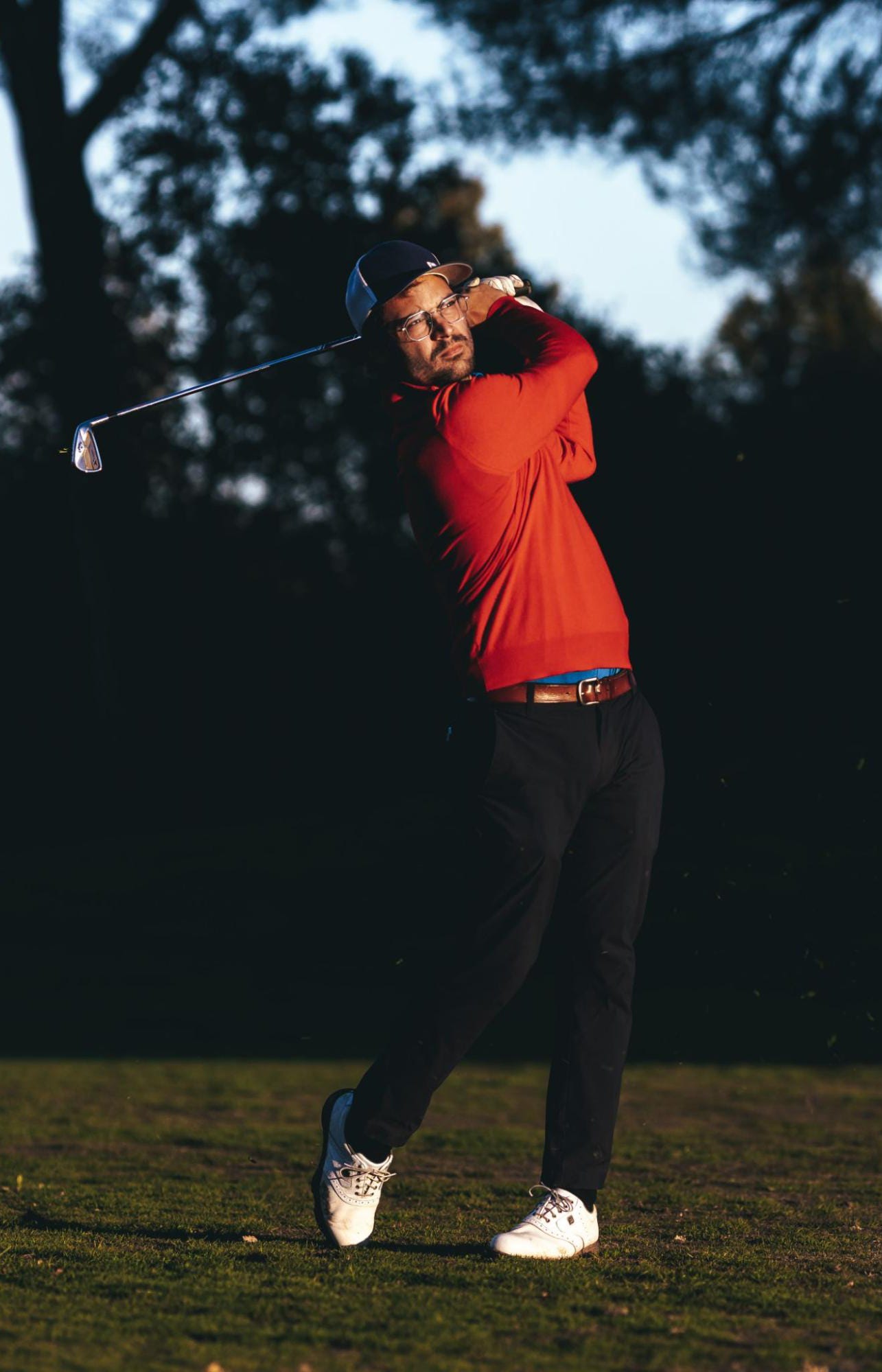
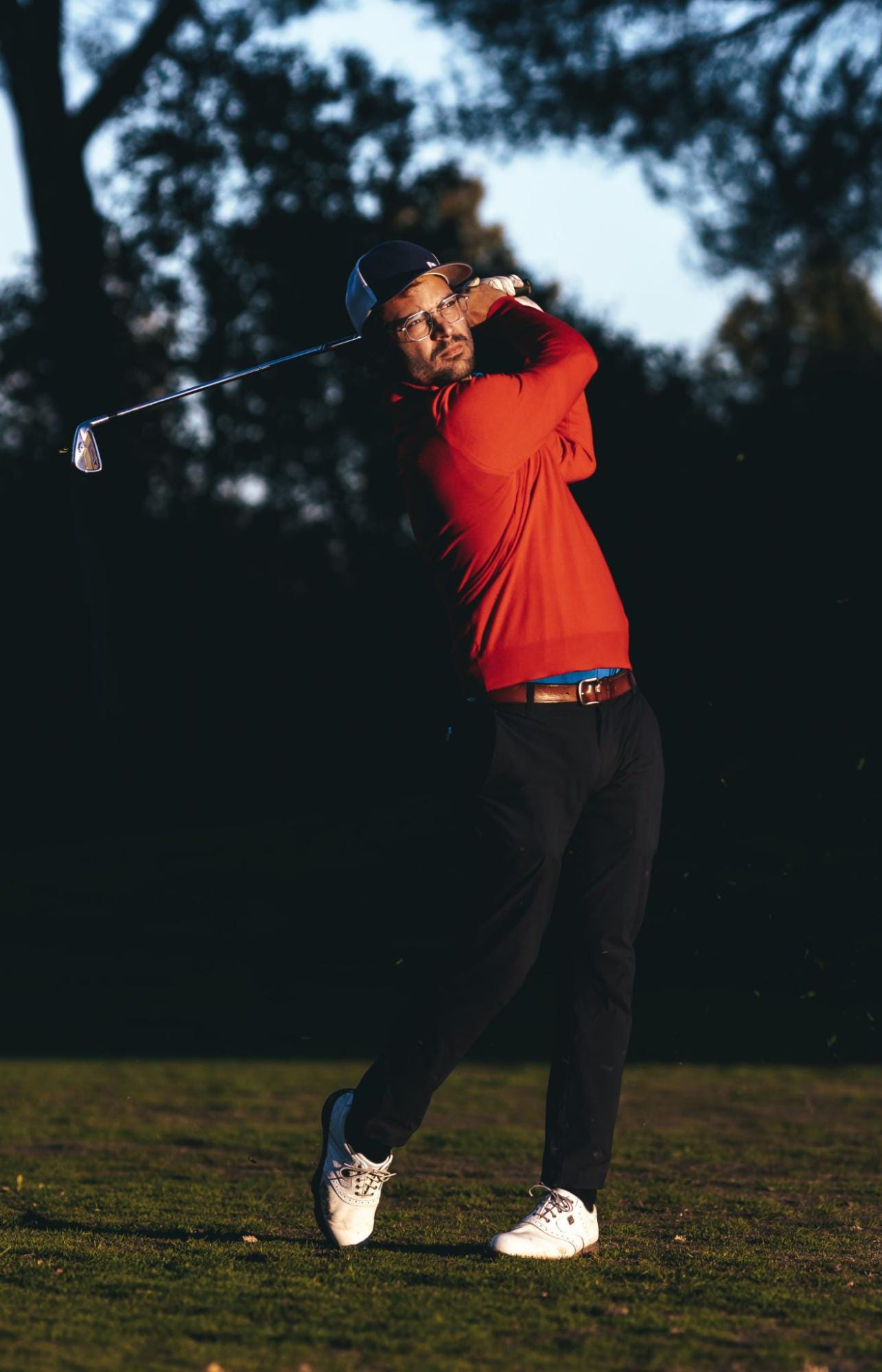
Why did you stop? Tell us a little about your experience.
At that time, in order to support myself financially, I trained during the day and waited tables in the evening. I was a good player but there was always this nagging feeling that something wasn't quite right: I realised that despite my best efforts, I was not achieving the desired results. It was an eye-opening experience because it helped me understand that no matter how good or skilled a player I was, I just wasn't mentally prepared to make that jump. I didn’t have the same focus and motivation as the other athletes around me, and there is no way I would have been able to compete with the European Tour professionals. I was too emotional; I guess you could say that compared to me, my opponents seemed to be made of stone. One day, I took a good look at myself in the mirror and realised that it just wasn't what I wanted to do with my life. It was a mature off-the-green decision, made by the fact that I wasn't mature enough on the green.
So, what career did you instead decide to pursue?
After graduating from university, I worked several Rolex Series events and for the US Kids Golf Italy with Lola Geerts for four years, before then going on to work in a sports marketing agency for a little while. My role involved organising golf competitions for Alfa Romeo throughout Europe; in fact, I was the project manager of the entire circuit for two whole years. It was a major learning curve as far as my working life was concerned. I learnt a great many things, some of which are also relevant in my role as a professional photographer. If I had to name just one of them... I’d say the importance of planning.
What made you decide to become a professional photographer?
My mum was a huge photography fan - even though she never made it her profession - so I’m pretty sure I inherited the passion from her. I spent my last year of university in London and it was during those short few months that I grew an extra limb; my camera became a part of me. I took it anywhere and everywhere with me. Sometimes my friends “hated” me for it! It had become an obsession... a desire to do nothing but photograph. Whilst studying, my mind was on many other things and, as I said, I had completely detached myself from golf. It wasn't until after I graduated that “I started making peace” with the sport and finally combined my two passions: by observing the sport through the lens, I felt that same passion I discovered as a youngster, stir within me again. I have been working as a professional golf photographer since 2014 and I have also started to play again, but in a much more relaxed manner.
What about golf... was it love at first sight?
That’s a good question! I was first introduced to this world as my dad’s caddy, just as my brother was before me. At the time, I was 6 or 7 years old, bursting full of energy and would never sit still: I would run across the grass, roll down the hills and climb the trees. For a while, I wasn’t particularly interested in golf: I was into athletics and as I was better at it, that incentivised me even more. That was until I also started seeing good results as a golfer: I suddenly realised that I was one of the most promising players in Italy, and therefore, from the age of 12 to 20, I dedicated myself entirely to this sport.
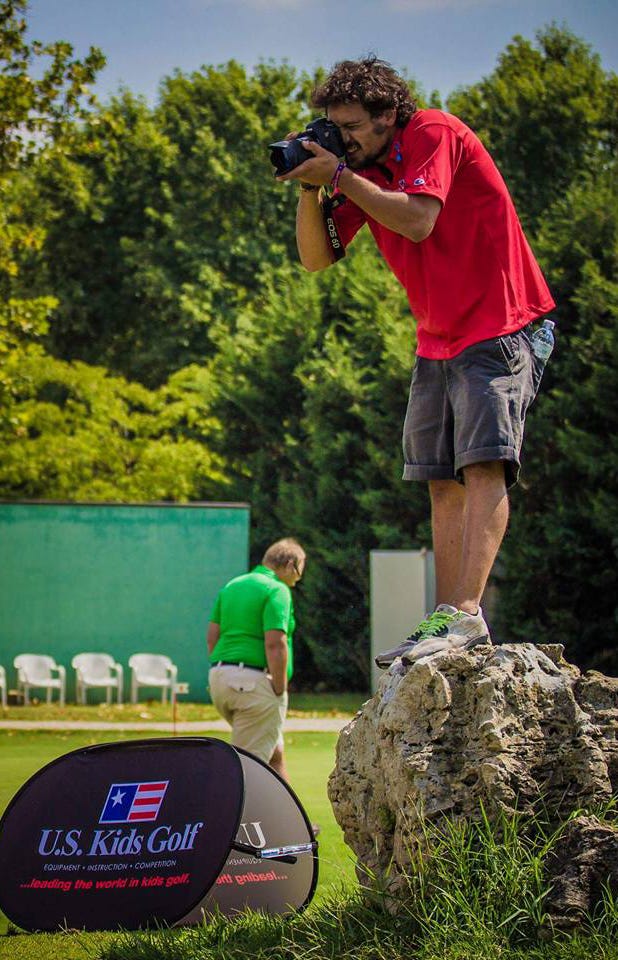
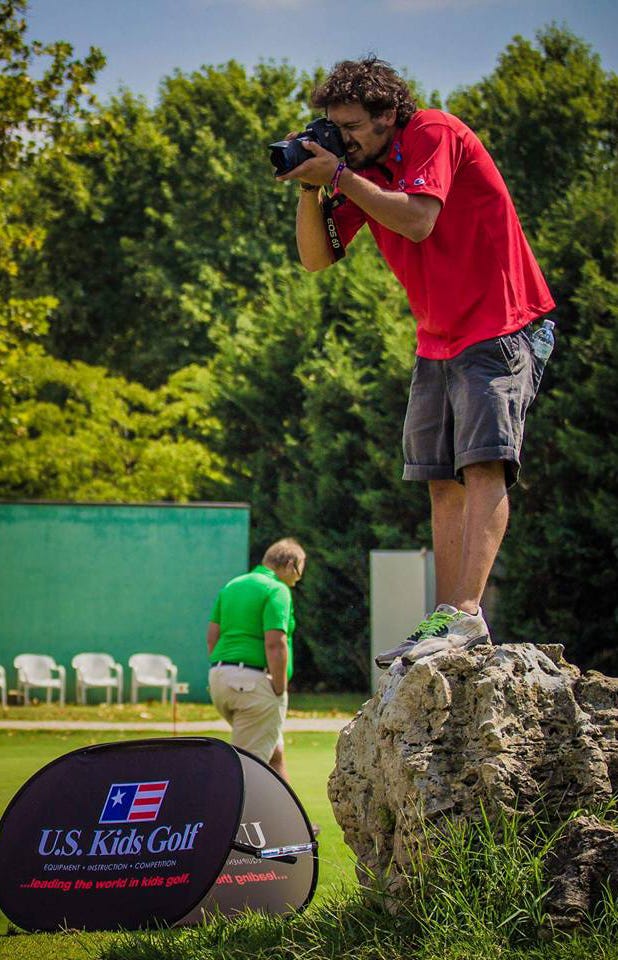
From golfer to golf photographer: what is it like to see the game on the other side of the lens?
I find that my days as an athlete come in handy when it’s time to snap pictures. I know what the golfer is thinking at any given moment; I completely identify with them and am familiar with the timing and dynamics of the game. I am also aware of where I must be in order to not disturb the athlete. I try to be extremely respectful and discreet; preferring to be barely visible during competitions. When the player is about to strike the ball in competitions, the clicking of cameras can often be heard throughout the duration of the swing... out of respect, I try to only snap a picture when the golfer hits the ball. As a former golfer, it is sometimes difficult to remain detached from what is happening before my very eyes. I had to learn to manage my emotions and instead focus on the photo I wanted to capture. I was once witness to a phenomenal shot by one of my sporting heroes; the crowd erupted into a roar, and I had to contain the pride bubbling within to immortalise that oh-so-glorious moment. But it’s totally worth it!
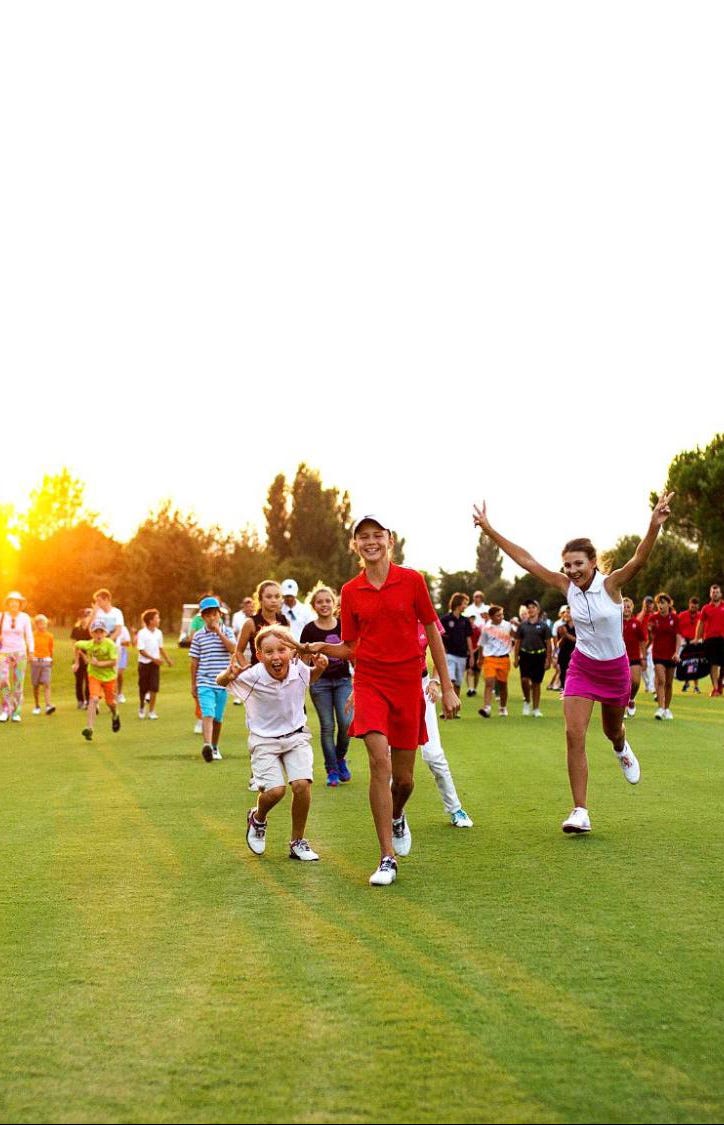

Out of all the photos you have taken, are there any that you are particularly proud of or attached to?
The one that stands out the most is the one that marked the beginning of my career as a golf photographer, and happens to be the one to which I am most attached. I snapped it during the first edition of the U.S. Kids Venice Open in Italy, during the month of August 2015. I attended the event as an organiser and, even though it wasn't asked of me, I took a lot of photos because I was already practically living with my camera around my neck anyway. This one final play-off took place during sunset and thanks to the beautiful light, I was able to immortalise both the audience and players themselves at a very intense, nerve-wrecking moment. This photo went on to become the promotional image used worldwide for the U.S. Kids. A version of this photo also spans the entire length and width of a wall in their US headquarters, and it has also appeared in many magazines and golf-related websites. I began to start taking this job much more seriously, after that shot.
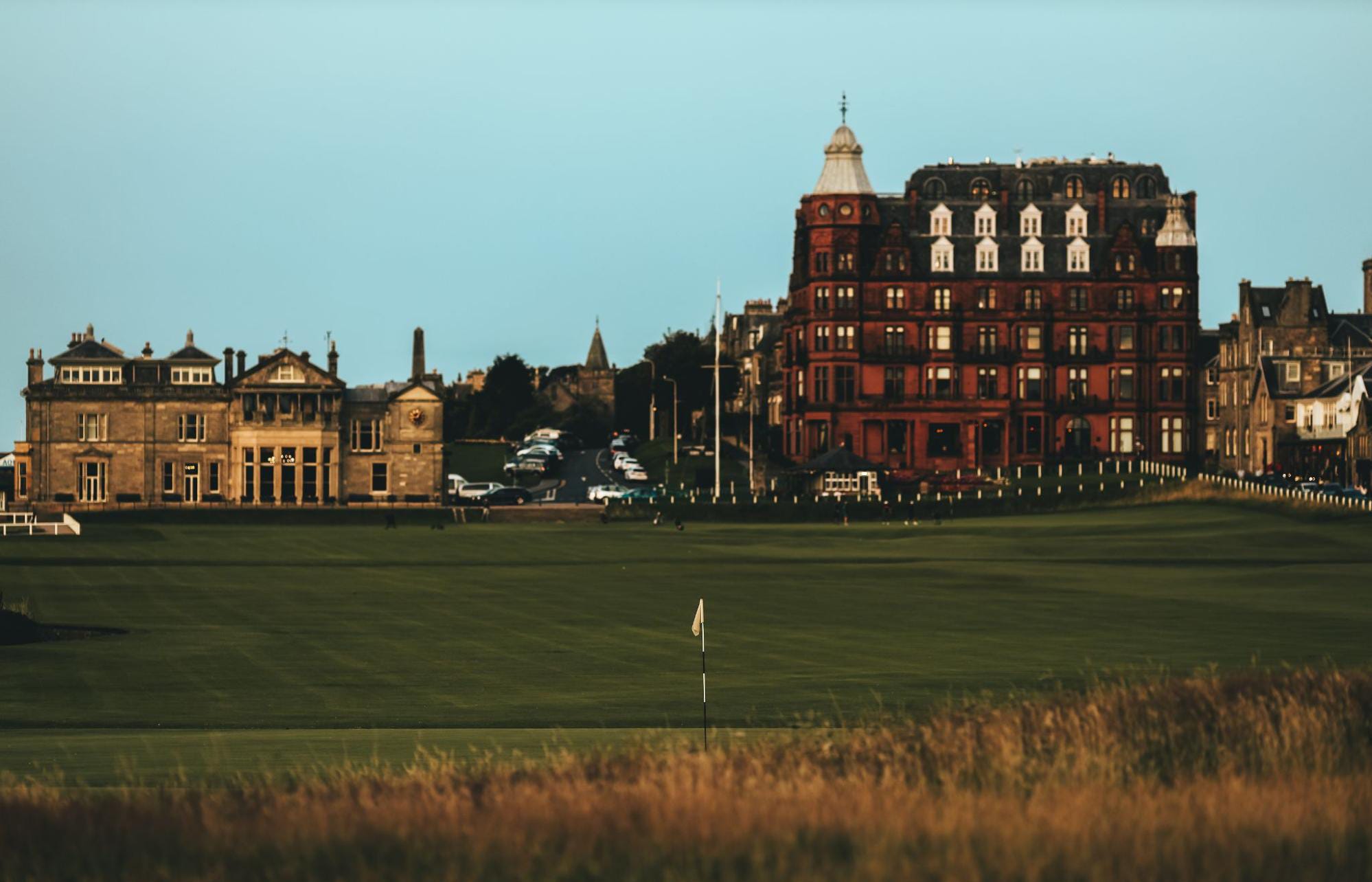
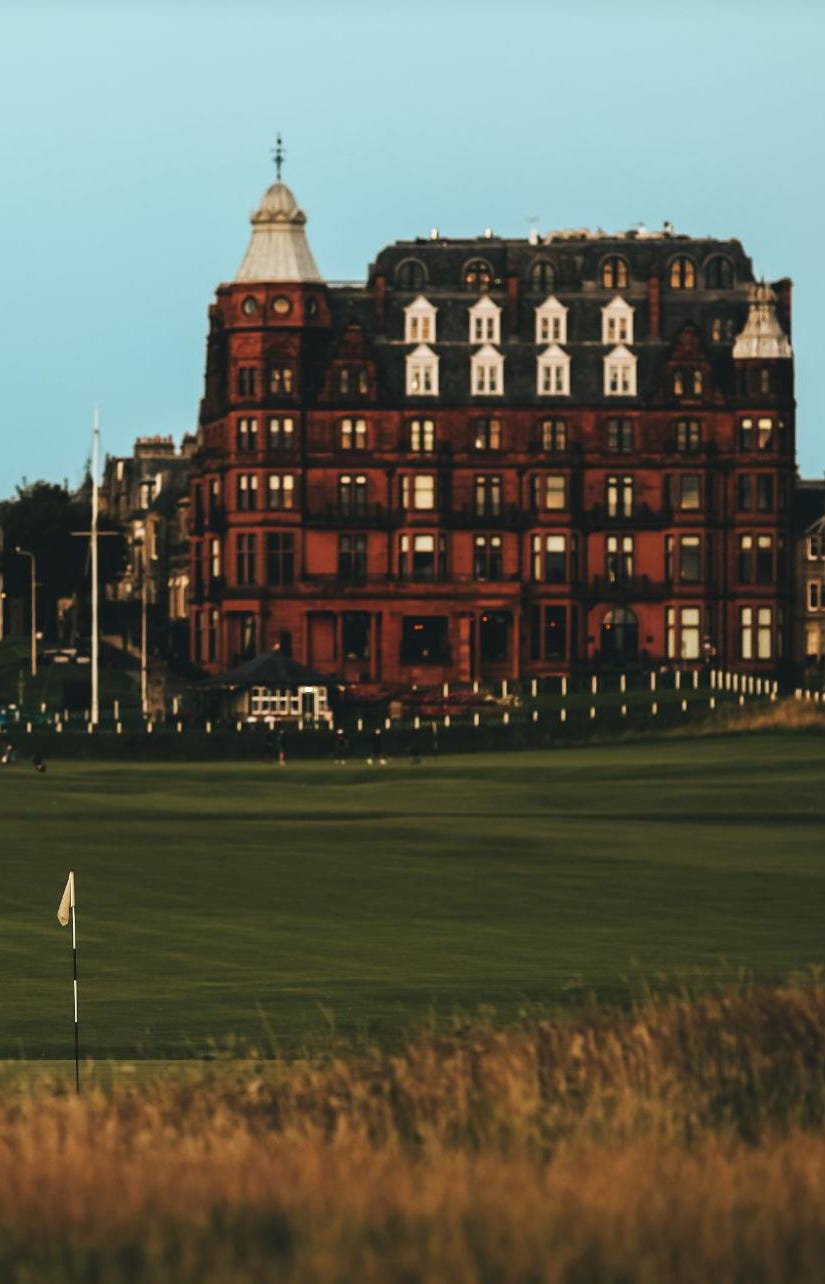
Are there any shoots in particular that stay with you?
The one on the Old Course at St Andrews, the Mecca of Golf. It was sunset there too, and the light was so sensational that I didn’t want to waste a single second. Tears of emotion and enthusiasm filled my eyes as I ran onto the green to shoot as much as I physically could, in order to treasure that utterly wonderful moment.
Have you ever had the chance to play at St Andrews?
I wish! It is very difficult to gain access to that course as it is ultra-exclusive. I did manage to play on the nearby greens though!
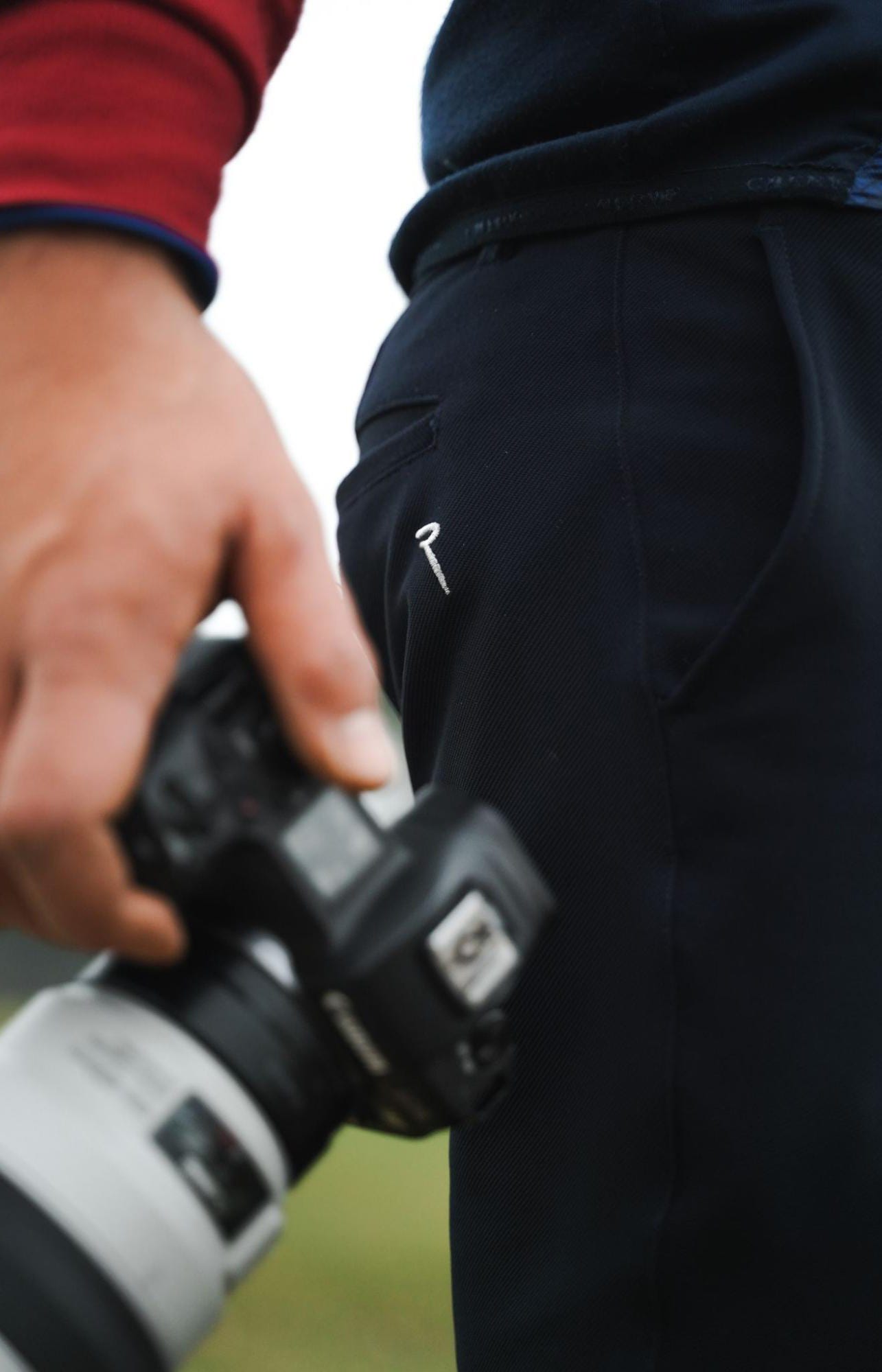

Besides the golf course, where else did you enjoy taking pictures?
Besides the green... there are several places that I remember fondly. At least once a year, I try to take a trip with my backpack on my shoulder and camera around my neck, and just enjoy trying to snap as much of my surroundings as possible. I’ve toured South Africa far and wide. I have also been to Cuba, which I really enjoyed, despite its less “wild” and more touristy nature. But I have to say that my trip to Ethiopia rocked me to my core: I saw such outstandingly beautiful things, but also a harsh reality that profoundly changed me and changed my outlook on life; whilst there, I also took shots that helped bolster my career as a photographer.
How do you organise your trips and travel for work?
I am a very organised person when it comes to work and travel. I always try to plan as much as I can before I leave, by taking things into account like the weather, the places I will be visiting, the equipment I will need to take, in addition to car arrangements and luggage, etc. My backpack goes wherever I and my camera go. After each photo shoot, I stay where I am and make several backups of my recently-captured work to avoid losing it due to theft or unforeseen accidents. I try to be as neat and precise as possible, because otherwise I believe that any disorganisation would somehow be reflected in my work and my shots. I believe that being organised is a really important - maybe even essential - quality for a professional photographer.
Have you always been so precise and methodical, or have you acquired these skills over time?
No, I was pretty disorganised as a child. In fact, it was sport that instilled rigour and discipline in me; it taught me to take care of my clothes and iron them, etc. I’m also certain that living abroad aged 19 helped me become more responsible. And to top it all off, the agency work helped me establish my very own working method and general approach to life.
When taking on-course shots, how important is it to capture the moment by improvising the situation and is it more important to have planned the shot?
I do my research before each job; I look at the site and inspect it to get an idea of the space and the sun’s movement, etc. When it comes to the actual day of the shoot, I tend to let myself be guided by instinct, but there is still a lot of planning involved, such as choosing the right lens or the best position, depending on the photo and final result I have already conjured in my mind. During the shoot itself, there is always an element of anxiety because you need to stay alert and try not to miss any major moments. And this is where the planning comes in. Anxiety helps you be cautious, and I still get anxious during every shoot because I always want to outdo myself and give it my all. And when I’m in the thick of the action - during the competitions - I also have to decide who to follow. Sometimes, looking at the scoreboard alone does not provide you with the information you need to understand where something interesting might be happening. Therefore, I study the players during the various stages and look at their social media accounts on the days leading up to the shoot; I try to get a fuller picture of the situation and understand if the golfer I am following is in a positive flow or going through a negative patch. I believe that it’s very important to understand the psychological state of the athletes during these moments.
Are you an analogue enthusiast or do you believe in new technologies?
I started out with a digital camera and am really fond of the technology. However, I do also shoot with analogue cameras, but I’m definitely not set in my ways. There’s just something undeniably magical about analogue and I can certainly appreciate how skilled past photographers were: even just having to keep track of how many shots are left on the roll can be really complicated. If digital photography didn’t exist, our work would be so much more complicated, but thanks to technological progress, each year it becomes just that little bit “easier”.
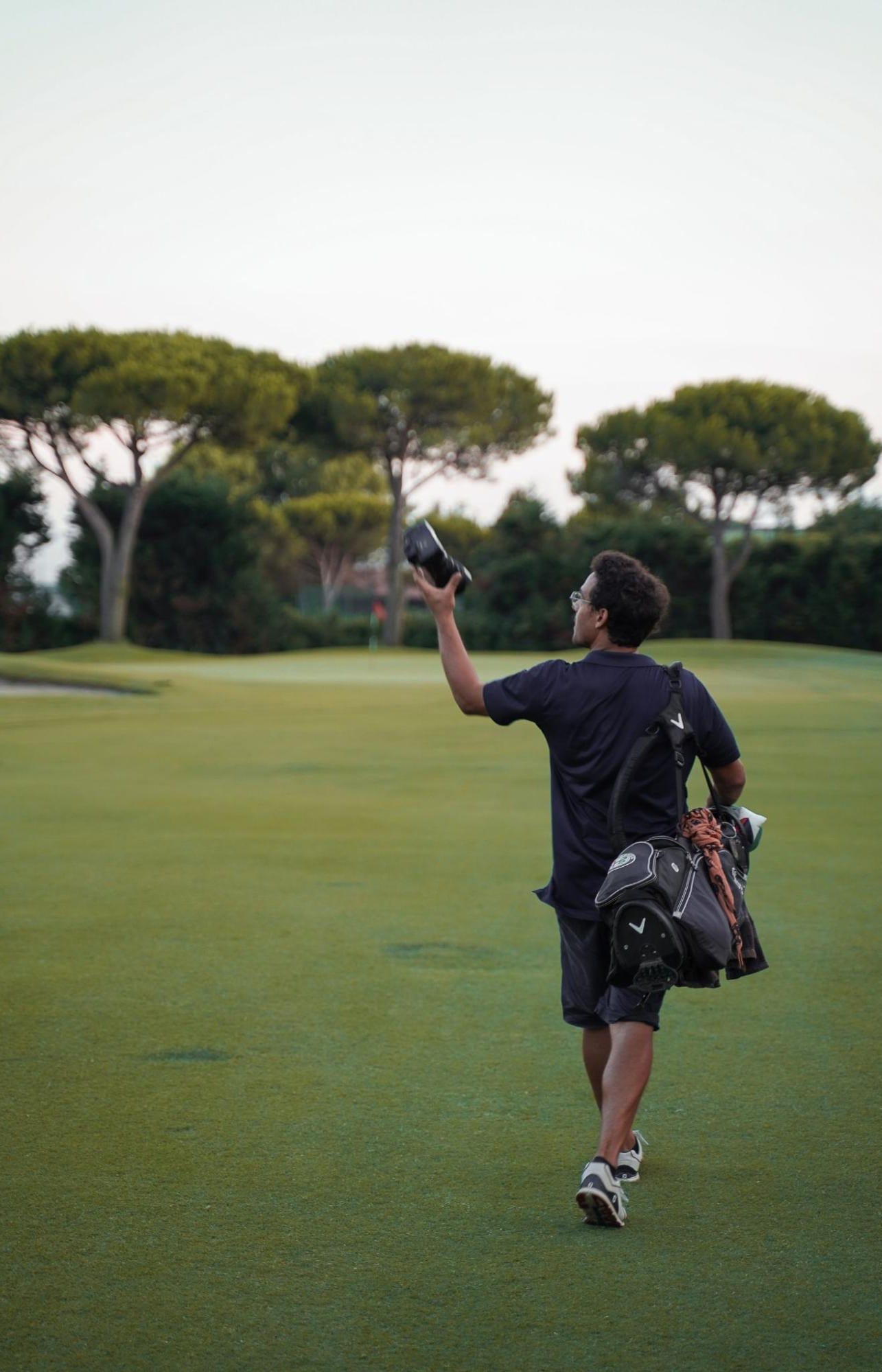
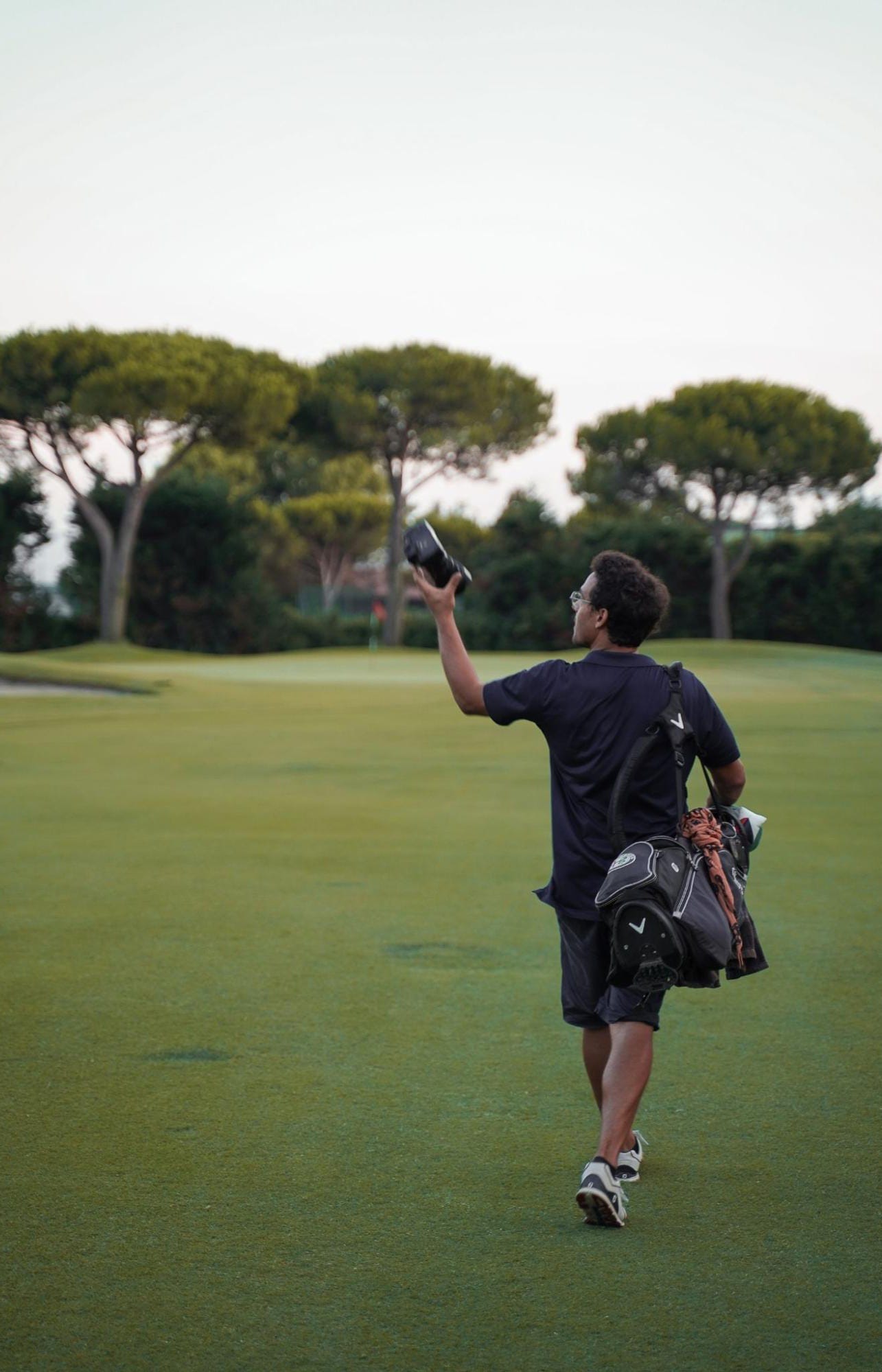
What's your favourite course to shoot on?
As I mentioned before, it has to be St Andrews. That being said, even Italy boasts some courses that are magical to shoot on, such as the Milan, Turin and Olgiata golf clubs. Even the Adriatic Golf Club Cervia, with its maritime pines and sea views, is very breathtaking. Another ultra-special location that I was fortunate enough to photograph is Dubai: it is like being on a green carpet in the middle of the desert, yet in the background, the skyline is filled with ultra-modern skyscrapers... it’s just crazy! Of course, each golf course is a world of its own, and my job is to make even the most monotonous backdrop seem interesting, and paint the surrounding environment in the best light possible. As a general rule, I try to remain focused on the players themselves, and only widen the view if the background is truly impressive.
Which other international courses have you visited?
I have captured shots at several courses in northern Europe; the best of which was probably Scotland, where I was lucky enough to play and shoot in some truly breathtaking links. There, the golf course is in its natural habitat; there is nothing artificial, just grass, hills and bunkers. Every shot is played and snapped immersed in an incredibly picturesque natural setting. I also loved Royal Bled in Slovenia... with its spectacular lakes. And the Doral in Miami, of course.
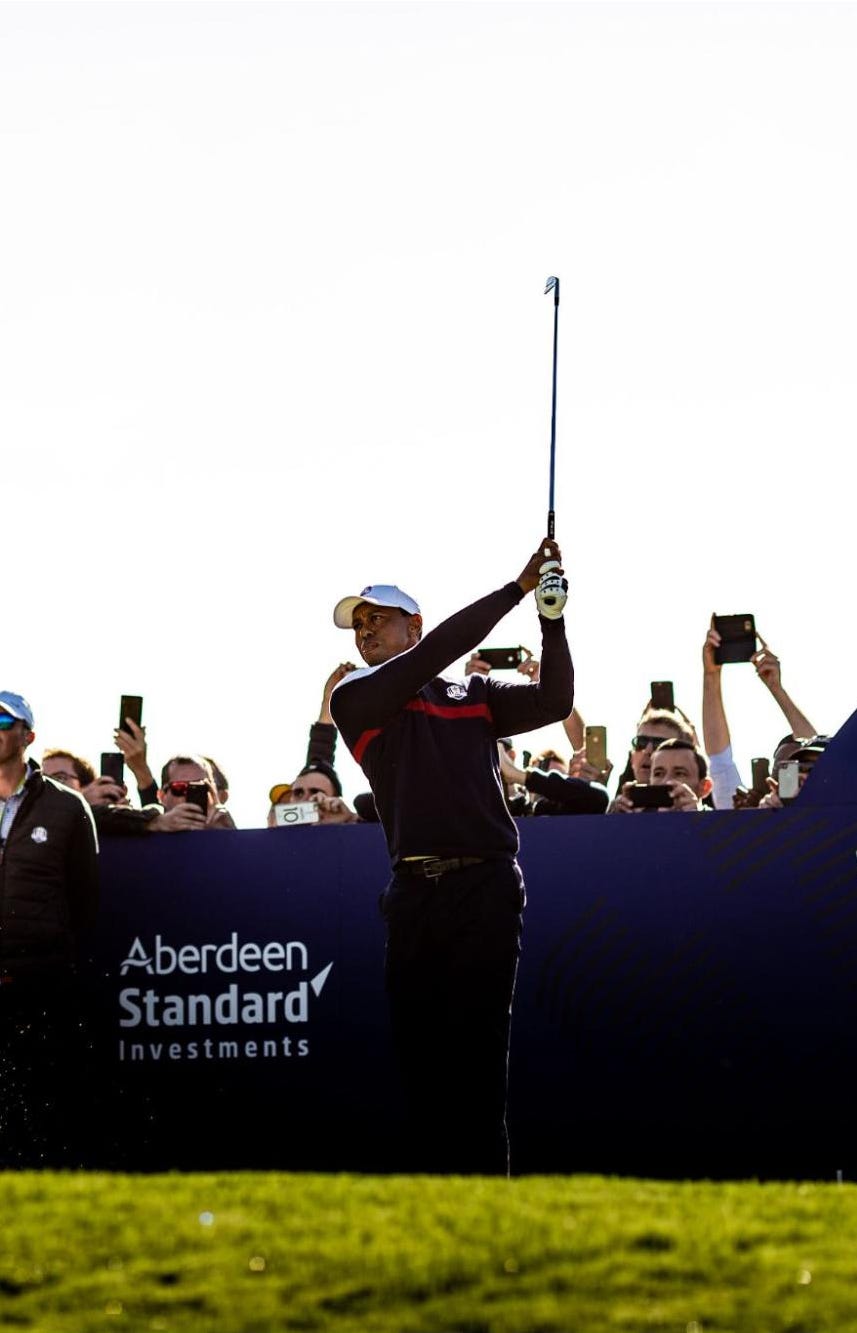
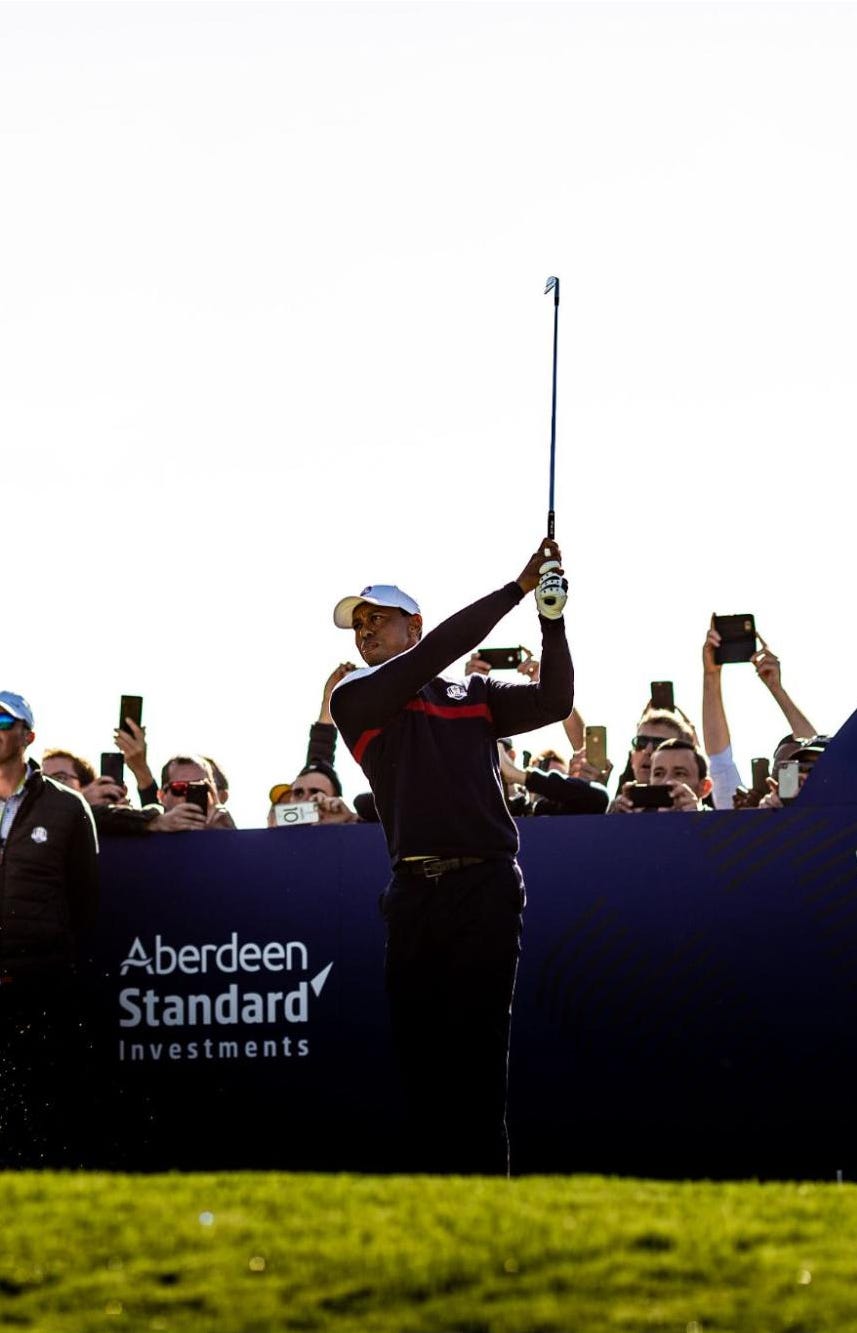
Philip Geerts told us that he came face to face with a crocodile... Have you ever had any close encounters with wild animals whilst shooting in South Africa?
You bet! Antelopes, giraffes, zebras, ... The animals have grown accustomed to the golf courses though and no longer fear the players or even those balls that can travel at crazy speeds!
/p>
Name one player you would love to photograph in action on the green?
Tiger Woods, or perhaps that’s too predictable an answer. I’ll add Rory Mcllroy, Justin Thomas and Andrea Pavan.
Who is your guru/professional that you consider a source of inspiration?
David Cannon. He boasts a 40-year-plus career as a golf photographer, and all the most famous and important photos of the great champions were taken by him. He is my role model, on both a professional and personal level: even after all this time, he still chooses to trek all those kilometres across courses with a camera around his neck. He is just incredible!
Have you ever walked onto a course with a golf bag and camera? Do you experiment with shots you would like to use at a later date?
Yes, always, except for competitions of course. I don’t use the self-timer because I don’t really like seeing myself in pictures, I’m not a particularly vain person. But I do try it out on my golfing buddies and see it as an opportunity to improve. When I have a day off, and even if I haven’t been commissioned, I will still follow the Italian championships and photograph as much as possible.
And you’re allowed full access in those cases?
Yes, due to my various accreditations and passes, I am recognised as a Federation photographer. EVITEREI!
How do you deal with releases and permissions in your line of work?
I think it can be said that since the dawn of social media, the subject of releases has become less restrictive. When I want to post photos online, I try to contact the subjects directly and ask for their permission to do so. Sometimes however, it is the athletes themselves or their managers who ask me to publish them or send them material to be used for promotional purposes. Once a photo is online, the photographer retains the intellectual property, yet it is for the use and consumption of all users. In principle, when you use a photo for free, as I do for example on social media, no big problems usually arise. However, the situation is very different if you want to use a shot for profit without the necessary authorisations... You must always be very careful when it comes to this. I always try to be as respectful as possible with regard to ethics and the professionals in this sector.
Are there any other sports you would like to photograph?
Skiing, snowboarding, surfing. Since golf, at least at the level at which I work, is a seasonal commitment and does not keep me busy all year around, I plan in future to perhaps add a winter sport to my roster, and thus be able to work around my seasonal golf commitment.
Do you have any future photography-related plans?
Yes, there’s one in particular: the 2023 Ryder Cup. I hope to photograph that event... I should hopefully be a Federation photographer for the event.
In general, I would like to continue working in this sector and covering major events, hopefully giving it my all each time and ever-refining my technique.
What an interesting chat with a down-to-earth professional with an indisputable passion for this sport and an eye for the athletes who play it.
We wish Filippo all the best in both his career and future.
Check out the other interesting interviews on our blog; such as the one with our players and ambassadors Philip Geerts and Lucrezia Colombotto Rosso… they're worth a read!

